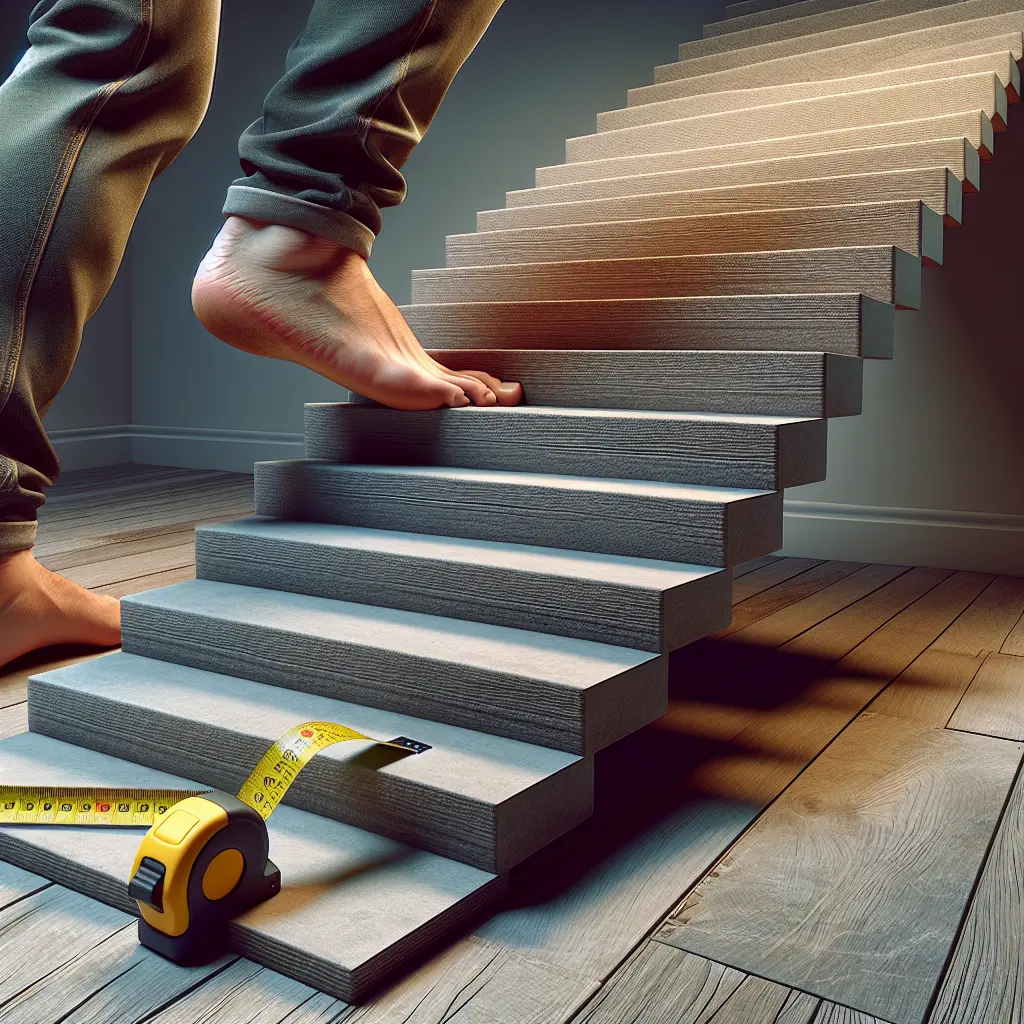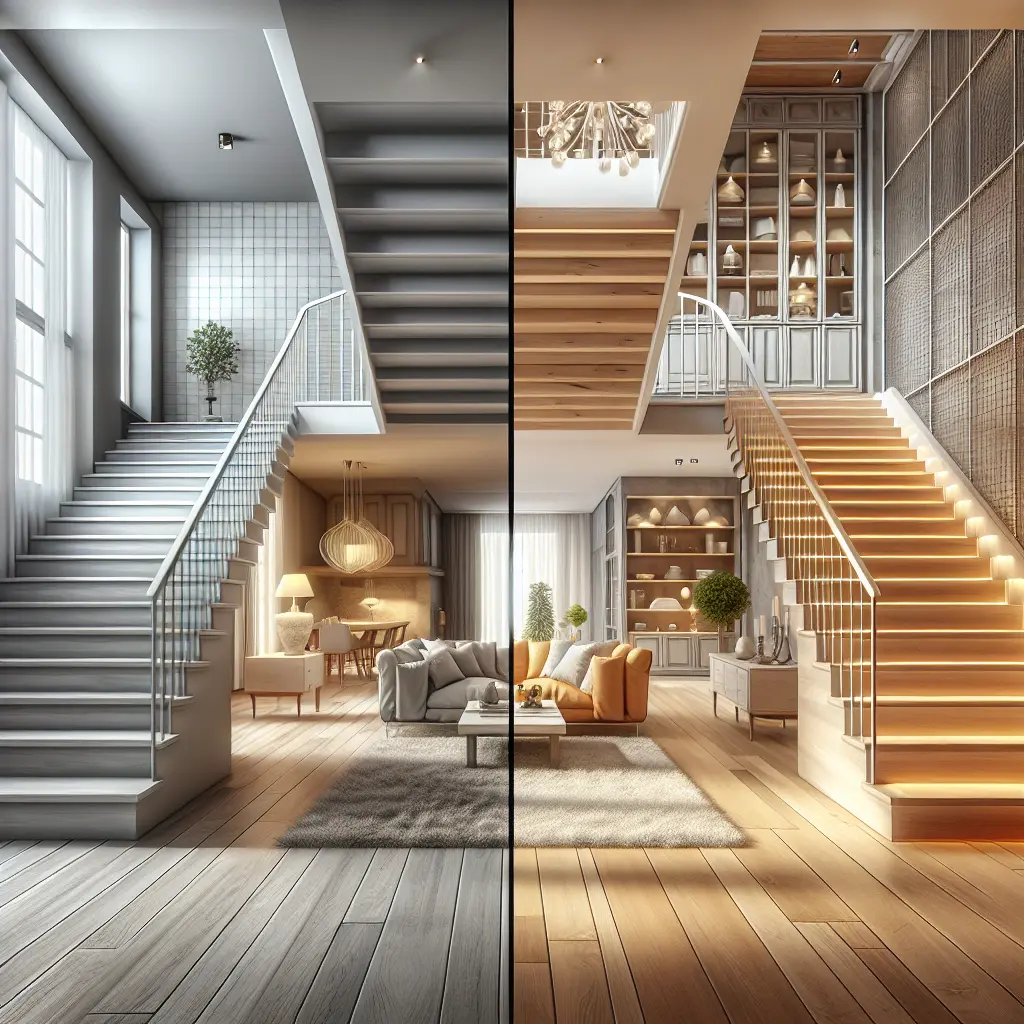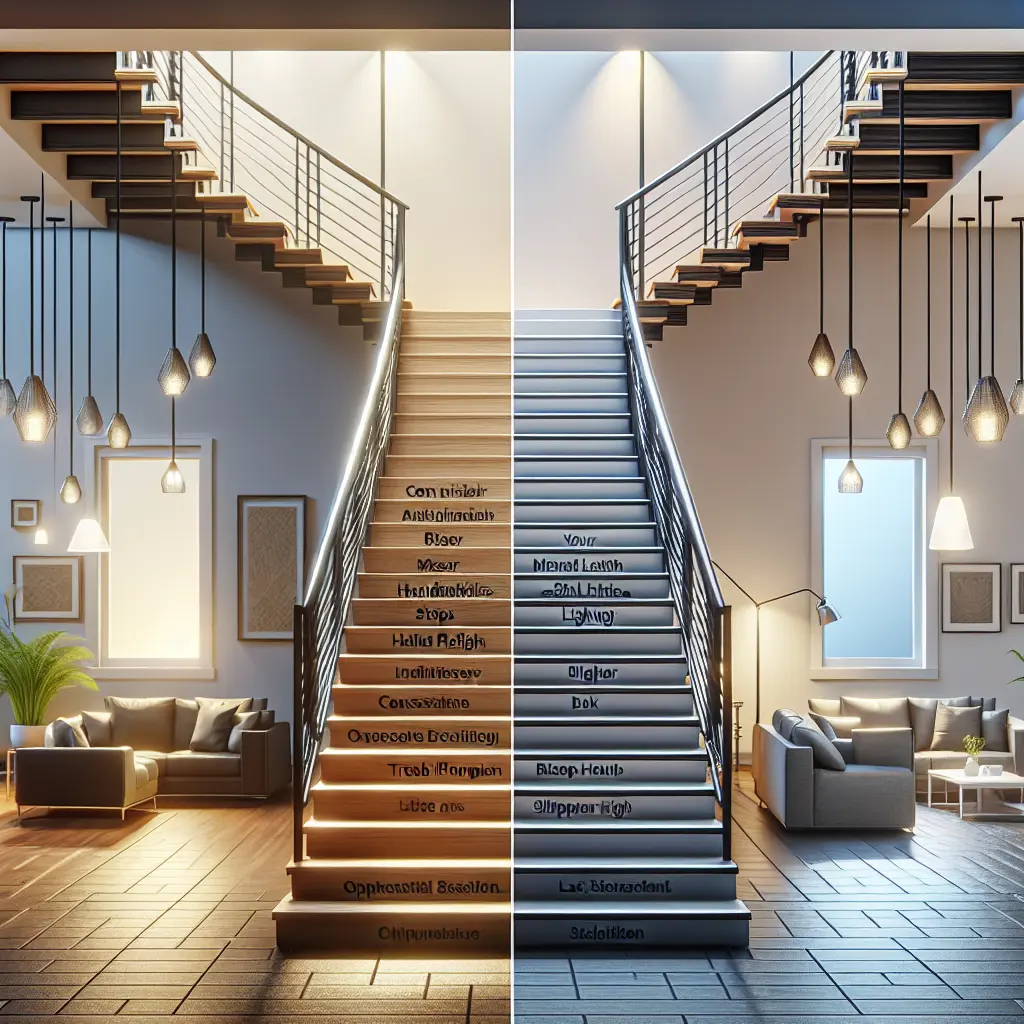As a property owner and construction enthusiast, I’ve seen my fair share of stairway mishaps. From safety hazards to design blunders, these mistakes can cost you time, money, and even put your loved ones at risk. At Curvspace, we’re passionate about creating functional, beautiful living spaces. That’s why I’m sharing my insights on the most common stairway errors and how to avoid them, ensuring your property is both safe and stylish.
Reader Disclosure
Jump to:
1. Ignoring Building Codes and Safety Standards
One of the most critical mistakes property owners make is overlooking local building codes and safety standards. These regulations are in place for a reason – to protect you and your family from potential accidents.
Key Safety Standards to Consider:
- Handrail Height: Typically between 34 and 38 inches from the nose of the tread1.
- Tread Depth: Usually a minimum of 10 inches.
- Riser Height: Generally between 7 and 7.75 inches.
- Stairway Width: Minimum of 36 inches for most residential applications
Always consult with a licensed contractor or local building department to ensure your stairway meets all necessary requirements.
2. Poor Lighting Design
Inadequate lighting is a recipe for disaster on staircases. Proper illumination is crucial for safety and can also enhance the aesthetic appeal of your space.
Lighting Tips:
- Install overhead lighting at both the top and bottom of the stairs.
- Consider recessed lighting along the stairway walls.
- Use motion-sensor lights for energy efficiency and convenience.
- Ensure switches are easily accessible from both ends of the staircase.
3. Neglecting Proper Maintenance
Regular maintenance is key to preserving the safety and longevity of your stairway. Ignoring small issues can lead to bigger, more expensive problems down the line.
Maintenance Checklist:
- Inspect treads and risers for signs of wear or damage.
- Check handrails for stability and secure attachment.
- Look for loose balusters or spindles.
- Examine carpeting for tears or loose areas.
- Ensure all lighting fixtures are functioning properly.
4. Choosing the Wrong Materials
Selecting inappropriate materials for your stairway can lead to safety hazards and premature wear. Consider factors such as durability, slip resistance, and maintenance requirements when choosing materials.
Material Considerations:
- Hardwood: Durable and attractive, but can be slippery without proper treatment.
- Carpet: Provides good traction but requires regular cleaning.
- Tile: Offers a wide range of design options but can be slippery when wet.
- Metal: Modern and sleek, but can be noisy and cold underfoot.
5. Overlooking Accessibility Needs
As our population ages, it’s crucial to consider accessibility when designing or renovating stairways. Failing to do so can limit the usability of your space and potentially decrease property value.
Accessibility Features to Consider:
- Install handrails on both sides of the stairway.
- Ensure adequate lighting throughout the staircase.
- Consider a stairlift for those with mobility issues.
- Use contrasting colors for tread edges to improve visibility.
6. Improper Tread and Riser Dimensions

Inconsistent or improperly sized treads and risers can lead to trips and falls. Ensure all steps are uniform in size and meet local building codes.
Tread and Riser Guidelines:
- Maintain consistent tread depth throughout the stairway.
- Ensure risers are of equal height for each step.
- Follow the “2R + T” rule: twice the riser height plus the tread depth should equal between 24 and 25 inches4.
7. Neglecting Proper Support Structures
A stairway is only as strong as its underlying structure. Failing to provide adequate support can lead to instability, creaking, and potential collapse.
Structural Considerations:
- Ensure stringers are properly sized and installed.
- Use appropriate fasteners and connectors.
- Consider adding a center stringer for extra support on wider staircases.
- Consult a structural engineer for complex designs or heavy-use applications.
8. Forgetting About Aesthetics

While safety and functionality are paramount, don’t overlook the visual impact of your stairway. A well-designed staircase can be a stunning focal point in your home.
Design Tips:
- Choose materials and finishes that complement your overall interior design.
- Consider open risers or glass balustrades for a modern, airy feel.
- Incorporate storage solutions into the stairway design for added functionality.
- Use decorative balusters or newel posts to add character.
People Also Ask
How often should I inspect my stairway for safety issues?
Conduct a thorough inspection at least once a year, and perform quick visual checks monthly.
Can I install a stairway myself, or should I hire a professional?
While minor repairs can be DIY, it’s best to hire a licensed contractor for major installations or renovations to ensure safety and code compliance.
What’s the best way to make my stairs slip-resistant?
Install non-slip treads, use anti-slip coatings, or add carpet runners to improve traction on your stairs.
Conclusion
Avoiding these common stairway mistakes can significantly enhance the safety, functionality, and aesthetic appeal of your property. By prioritizing proper design, materials, and maintenance, you’ll create a stairway that not only meets building codes but also adds value to your home. Remember, when in doubt, always consult with professionals to ensure your stairway is both beautiful and safe.
Show & Tell
We’d love to hear your thoughts about these ideas! Simply click the link to head over to your favorite platform and add your comments about this post there. We’d like to know about your insights, questions, or just saying hi.
Disclosure
Our content is reader-supported. This means if you click on some of our links, then we may earn a commission. Commissions do not affect our editor’s opinions or evaluations. Learn more about our editorial process.

About the Editorial Staff
The Curvspace editorial team comprises a diverse group of experts on intermediate and threshold spaces in homes and workplaces. Architects and interior designers, civil engineers and artists, environmental and behavioral psychologists, sociologists and anthropologists. All collaborate to create helpful content, that explores the full potential of these often-overlooked areas to enhance our daily lives.


